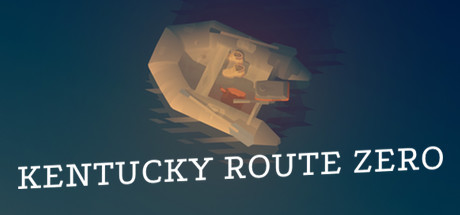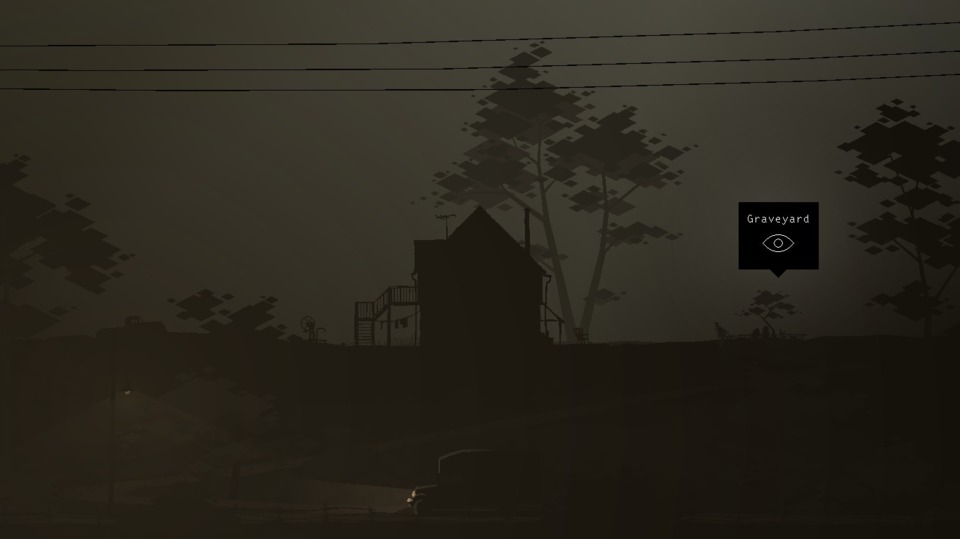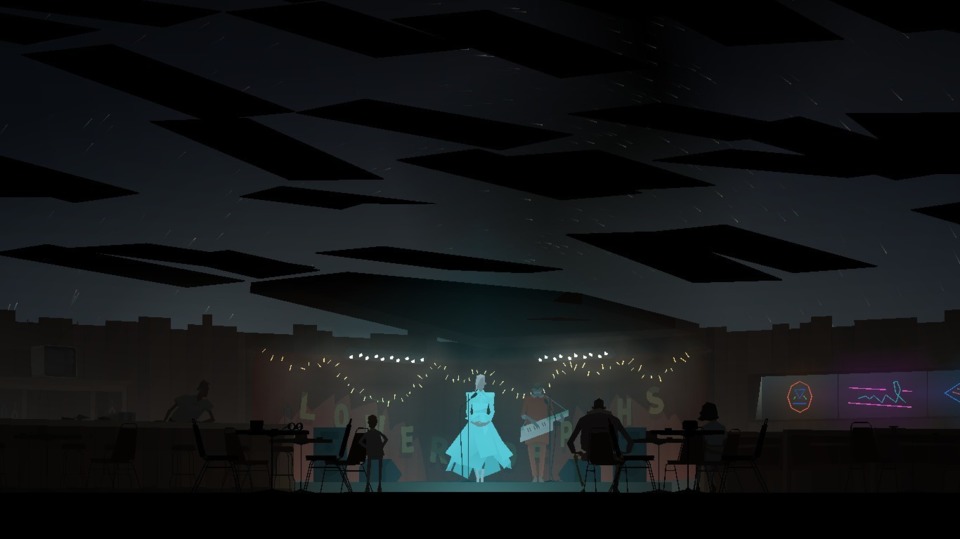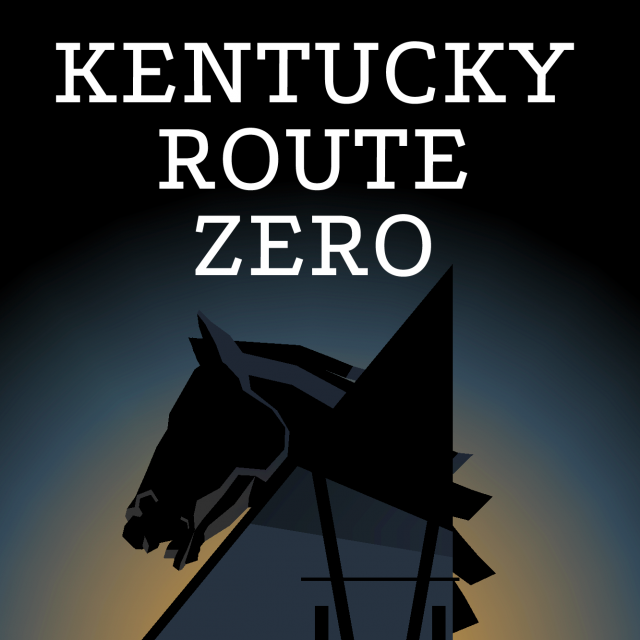
In 1964, pop artist and provocateur Andy Warhol produced a film named Empire, which featured an uninterrupted shot of the top of the Empire State Building for 485 minutes straight. Warhol actually demanded that the film footage be slowed down to 16 frames a second when shown to patrons, extending the original runtime to this new, almost eight hour long film length. It's considered a bold and provoking piece of cinema, either in spite of or due to the sheer amount of absolutely nothing going on for a relatively long period of time. Common wisdom would determine the closest video game equivalent of this would be Desert Bus: one of many joke games featured on the unreleased licensed Sega CD game Penn & Teller's Smoke and Mirrors that later found new life as a masochistic charity fundraiser. However, it fails the comparison due to one particular factor: Desert Bus's purpose was to annoy and befuddle, not to elevate and enlighten in the manner of an art piece. After playing what feels like fifty hours of Kentucky Route Zero (my Steam tracker suggests something closer to six), I now believe it to be the more apt correlation.
Kentucky Route Zero is a minimalist, monochrome (mostly), adventure game driven by a text interface that offers multiple choice responses for the player character - whomever that might be at the moment, sometimes several characters at once - to select in order to progress the story. The game is almost entirely driven by these prompts, barring the few occasions when you're traversing the backroads of Kentucky (and, later, the more metaphysical topography of the titular Route 0) with a few directions provided by other characters. The story is... largely open to interpretation, but involves an aged delivery driver named Conway seeking a place called Dogwood Drive for the final delivery of the night and possibly his career. Along the way he joins up with Homer/Blue, a dog whose gender/name is determined by the player early on (both can be left a mystery if the player so chooses); Shannon, a TV repairwoman who finds herself assisting Conway after being prompted to do so by an enigmatic message left by her supposedly deceased kin Weaver; Ezra, a lonely and semi-feral child whose "brother" is a colossal bald eagle named Julian; and eventually a sardonic musician named Junebug who may or may not also be a robot. Their journey is that of a shaggy dog story, where one destination leads to the next with very little in the way of a sense of progression or continuity, and the long night stretches on forever like a dimly lit interstate highway.

I wanted to like this game. Lord knows it's received enough praise, with so many critical voices speaking to how affected they were by this scene or how that scene left them in a state of deep thought for many a sleepless night. With the recent advent of Act V - released January 2020, some seven years after the debut of Act I - a lot of us holding off on what might have been an incomplete vaporware product finally saw our on-ramp, as it were. However, to say the game revels in its own tedium - its own depictions of the doldrums of gettin' by in a hostile world where loneliness and despair are so often your only travelling companions - would be an understatement. The game is in absolutely no hurry to get anywhere important, and prefers it that way. At a certain point towards the end of Act I, the main character suffers a leg injury that causes them to hobble slowly around the game for some or all of the next two Acts, making the playthrough even slower somehow. In tandem with this lethargic pace, the game dwells luxuriously in those small moments between something, anything, happening, letting you absorb the atmosphere - as dour or as deliberately uninteresting as it frequently is - while clicking through some flowery, loquacious prose, even more of which can be prompted by the player with certain choices. If the game thinks it could get away with depicting eight straight hours of the Empire State Building, it would take the opportunity in a heartbeat. A very, very long heartbeat, like that of an ancient colossus sleeping dormant beneath the Earth's mantle.
For a while, I didn't mind this at all. I welcomed it, in fact. I appreciated that the game had a tone and a vision all of its own, from the wireframe vector graphics to the stark font treatment to the determinant manner in which it delivers backstory: you basically choose how each character got to where they are currently, from the dog's identity to Conway's home troubles to Shannon's relationship with her cousin Weaver, and the game remembers these choices and calls back to them when appropriate. It was around Act II's "interlude" - brief (well...) single-scene presentations that work to introduce the following Act; a vital addition back when there were still long waiting times between episode releases during which you could absorb the interlude's possible meanings - where you sit through a play involving a rundown bar and a few of its mopey regular patrons. You are a captive audience: you sit in a chair, only able to swivel around to take in a jukebox providing background sound, the nearby director and writer, the critics in the audience behind you, and the play itself, and must mouse-click your way through every line of insipid dialogue about debt and love lost and every other morose conversation that tends to happen in some godforsaken murky drinking hole, while remembering to spin around and click-through more self-aggrandizing (or maybe ironically so?) fictional reviews and director notes about the in-progress play, until eventually, mercifully, a radioactive skeleton man shows up and the sequence is over. At a certain point I'd stopped reading anything - and I love reading in games, as more than a few lengthy visual novel playthroughs will attest to - and was impatiently tapping through what felt like several hundred pages of a tiresome student project when I realized I was no longer enjoying the game. At all. Nothing about its above quirks and foibles appealed any longer, and I knew if Act III didn't pick up I was done.
It did not pick up.
Oh my, no.

So without hopefully spoiling too much (if that's even possible), I'd like to guide you through a Cliff's Notes rundown of what the third Act of Kentucky Route Zero entails. I've excised a whole lot of musing and some determinant side discussion with inessential characters, but believe me when I say there's enough of both to drown a liberal arts Professor in double-spaced A4 grandiloquence.
When I write all that out, it sounds eventful, but let me ensure you that it wasn't. The Xanadu adventure, the distillery tour, exploring the Hall of the Mountain King: each persists for an interminable amount of time, with some exceptionally dry narration and multiple choice suggestions that only serve to extend the banality even further. Meanwhile, the fun topics up for debate this episode include: crushing medical debt, crushing corporate debt, the permanence of certain injuries, Alzheimer's, ageing, abandonment, the death of dreams, the painful past, the painful future, the painful present, and the game's customary background radiation levels of loneliness, despair, and general malaise. The more I played, the more I wanted to die, until I eventually reached a point where I felt like I might've already done so without realizing and this game was actually my life flashing before my eyes in some abstract manner.
Let's just say I'm not really in the mood to play any more, and I am clearly not the target audience. It obviously means much to a lot of people, and I won't argue that they're probably more intellectually capable than I of getting something worth cherishing out of the dense semiotics and slow tone piece that this game presents, but if my mood dips any further because of KR0's soul-crushing languidity and ongoing exploration of the major human miseries the authorities are going to find my body in a ditch somewhere having found my own proverbial "route zero."
I did not enjoy this game. Was I meant to? Who fuckin' knows.
Rating: 2 out of 5. (Or probably higher if I'm being fair, but I haven't the energy to be civil about this.)
| < Back to 155: Vaporum | The First 100 | > Forward to 157: Donut County |

Log in to comment